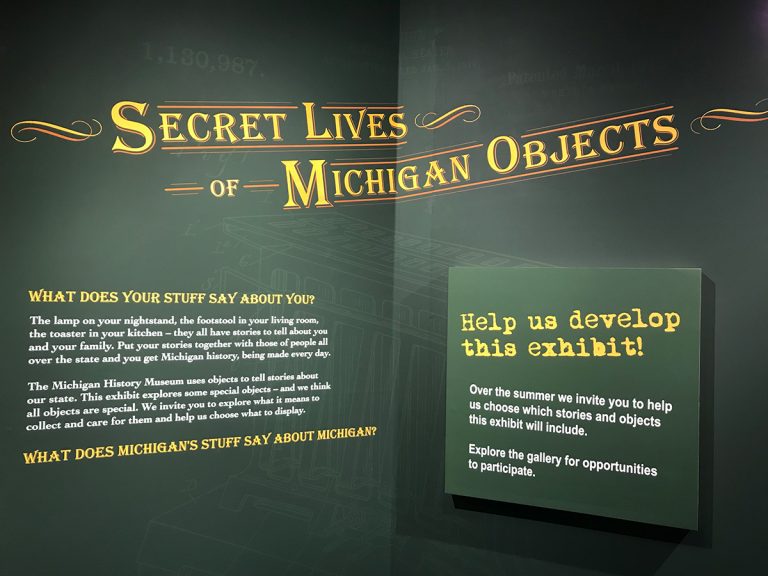Our last blog post explored the reasons that people and museums collect objects – and how we decide if an object is worth keeping. If you missed it, click here to go back and catch up!
Today, we’re going to turn away from museums for a moment and focus on…you! You’re ready to get started with your collection (or take better care of an old collection) and we want to help. In this article, you will find recommendations from real museums professionals about what to do next.
How Should YOU Collect?
Let’s start at the very beginning. Obviously, it’s your life and you can collect however you want – but here’s what we recommend:
- When considering an item to add to your collection, seek out the history behind the item(s).
- Develop your own criteria for what you will and won’t accept. For example, what’s the worst condition you’ll accept?
- Remember that it is a real responsibility, especially when collecting family heirlooms. If you agree to keep it, you have to take care of it. And if you don’t want to keep it? Remember these items are a part of your entire family’s history, so ask your family members for their input before you do anything.
Determine What You Have
The first step in assessing your collection is to figure out what you have, what it’s made of and how it was made. Any decisions you make about care or preservation must be based on the answers to those questions.
Assuming you already know what the object is and what it was used for, you should next determine what it is made from. This will help you determine the best way to care for it. All items fall into one of three categories: organic, inorganic or composite.
- Organic materials are made from once living things. They include wood, plant fibers, other plant materials, paper, textiles, threads, yarns, basketry, leather, parchment, hair, bone, and plastics.
- Inorganic materials are derived from minerals. Inorganic materials include ceramics, glass, metals, and stone.
- Composite items are made up of both organic and inorganic materials.
Determine Condition
Once you understand what your object is made of, you can begin to determine its condition. When thinking about the condition of an object, first consider structural issues. Is the item broken? Are there missing parts? Is the structure loose? Structural problems should be investigated and described first because they potentially impact the survival of the entire piece.
After the structural condition of a piece is determined, look at the more cosmetic elements of the object. For example, has the paint worn or chipped away? Is the item dirty?
Rules to Live By
Museums prioritize preservation over everything else. It is a legal and ethical mandate. That’s why more than 80% of a museum’s collection is stored in dark, environmentally controlled storage facilities. When artifacts are put into an exhibition, it is only for a short time period.
As the steward of your family’s treasures or personal collection, you have much more freedom and flexibility in determining how you’ll use and display your items. What’s the point in keeping them if they are just going to sit in a box? Here are some guidelines:
- First, do no harm. This means doing your homework to determine the best way to display your objects. Or, work with a professional who can do that legwork for you!
- Second, no matter how you use/display your item, keep it clean using minimal chemicals. Dust furniture, shine and wax metals, clean jewelry, etc. Consult a conservator or research online using reputable sources.
- Third, document the stories! If it hasn’t been done already, take the time to research the history behind the object. Write it down and keep it with the object, or in a safe place. This only increases the object’s historical and sentimental value.
- Fourth, think about getting your valuable family items added to your homeowner’s insurance. In the event of an accident such as flood or fire, it can help cover expensive conservation and restoration. A licensed and trained professional appraiser can provide a valid appraisal of items for insurance and also for sale or donation of heirlooms to a public institution. (Please note the ethical and legal mandates don’t allow museums to provide a value on any artifact or item. So we can’t help you with this if you call.)
- And lastly, plan for emergencies! Most of us don’t even have emergency plans for our families and our pets, let alone our family heirlooms! However, people who have been through terrible disasters like floods or hurricanes tell us the items they are the most sad to have lost is their family photographs. Planning before an emergency can help save your treasures from complete destruction. Proper storage methods can also help preserve items in emergency situations.
Caring for Your Collection
Stay tuned for our next post in this series – Secret Agents of Deterioration. We’ll explain the most common “secret agents” that may be contributing to the deterioration of your collection items – and what you can do to slow down the process.
If you’re wondering how to care for your photograph collection, you’re in luck! We already have a 3-part series that will help you do just that.
Click here to read Part 1
Click here to read Part 2
Click here to read Part 3


